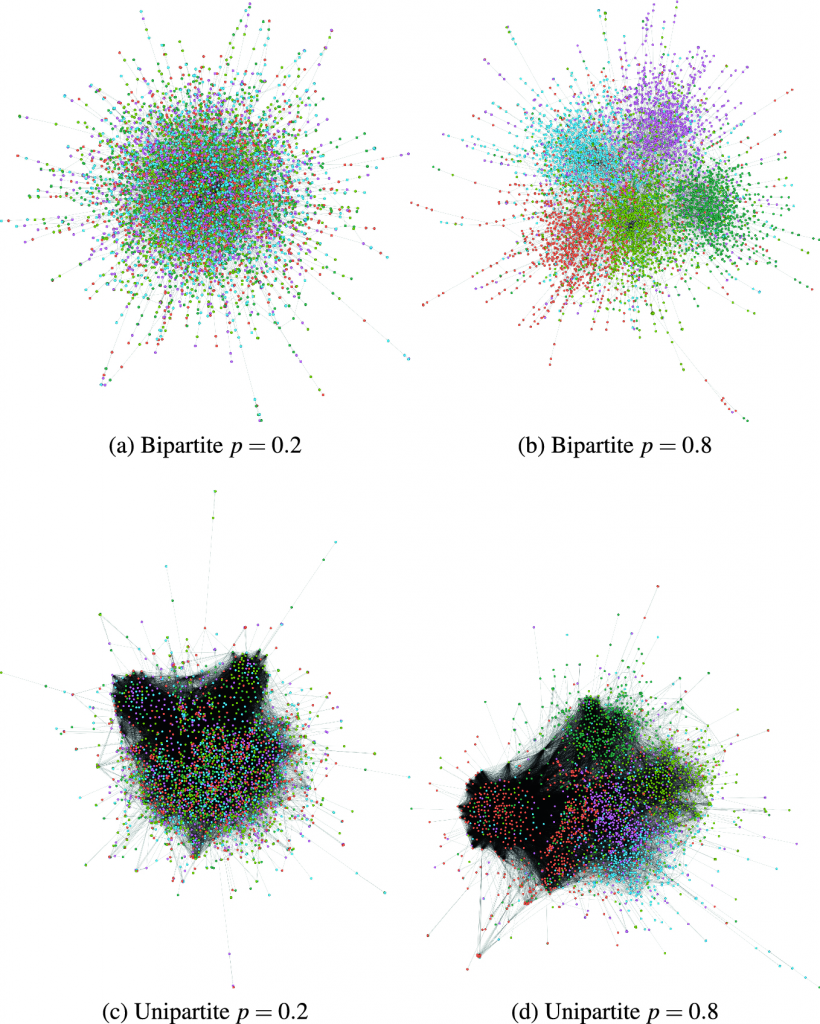New paper available online now.
Many real-world systems can be represented by bipartite networks that link two classes of node. However, methods for analysing bipartite networks are not as well-developed as those for unipartite networks. In particular, community detection in bipartite networks is often approached by projecting the network onto a unipartite network incorporating just one of the bipartite node classes. Here we apply a simple model to generate bipartite networks with prescribed community structure and then test the performance of community detection using four different unipartite projection schemes. Several important performance issues emerge from this treatment, particularly when the original bipartite networks have a long-tailed degree distribution. We find that a “hyperbolic” projection scheme mitigates performance issues to some extent, but conclude that care must be taken when interpreting community detection algorithm performance on projected networks. These findings have implications for any scenario where a unipartite projection is analysed in place of a bipartite system, including common applications to online social networks, social media and scientific collaboration networks.


